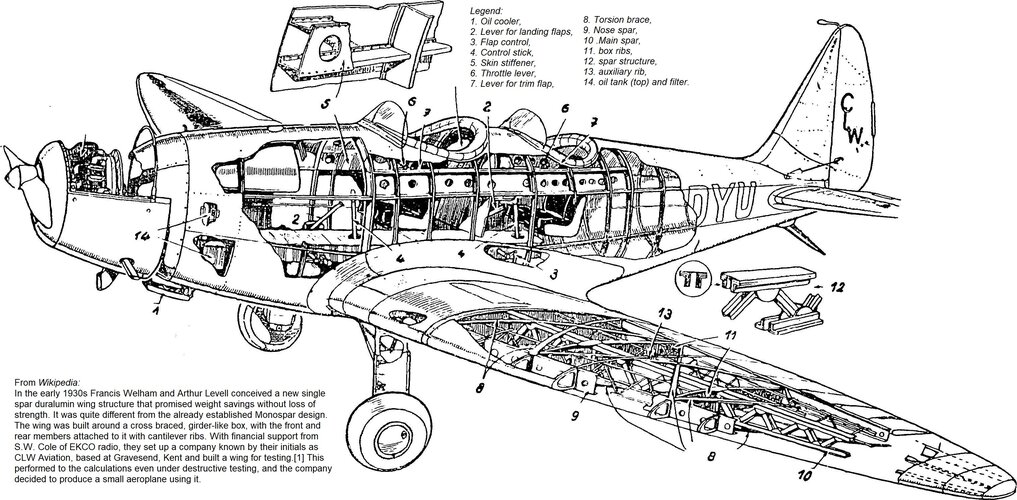SPF contributor Motocar posted to his website this cutaway of the CLW Curlew. The post referenced his source, an archival version of the German magazine Flugsport for 1937. I couldn't find a thread for CLW here at SPF, so I started this one as this airplane contains some structural details worthy of the cutaway that some members might find interesting. Wikipedia has a good history of the company and this airplane, and I included, on the cutaway, a couple of their opening sentences to explain the structural innovation. I also found a legend for the numbers in the Flugsport article which, I believe, came from The Aeroplane.


